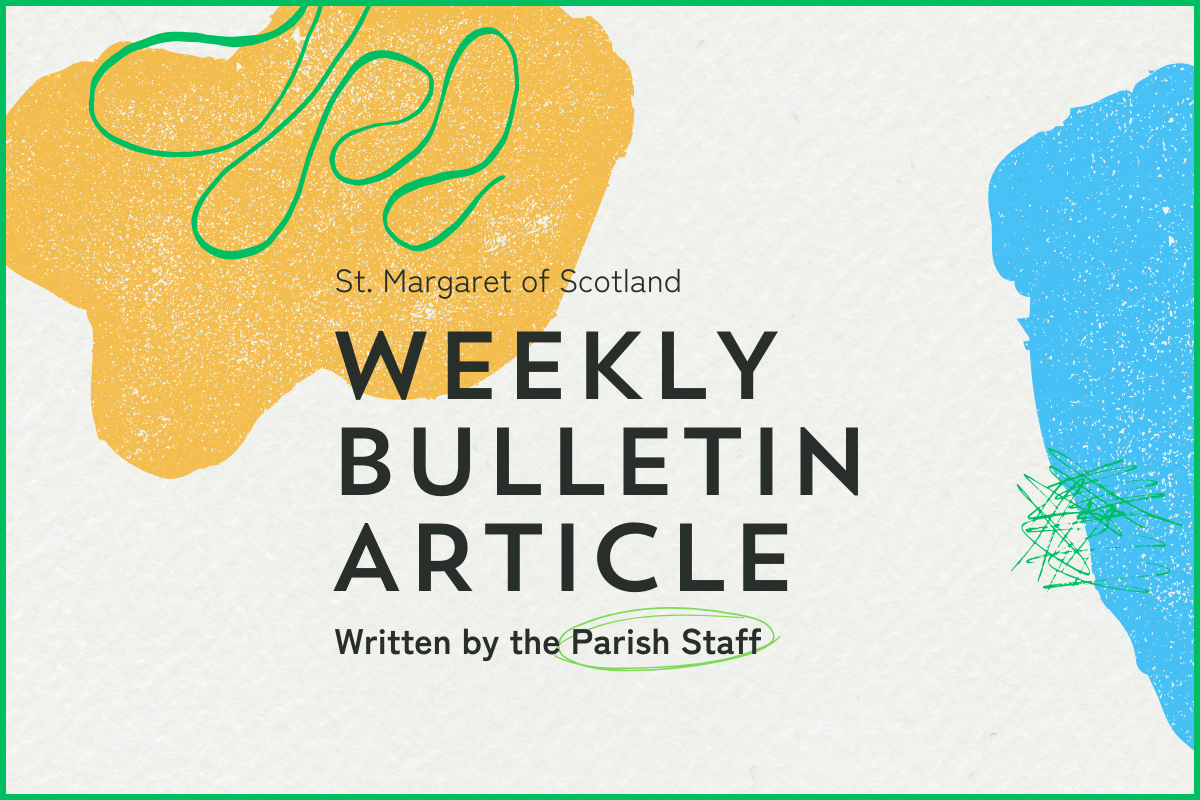Throughout the year, we present an article in the bulletin each week on a variety of topics, written by a member of our Parish staff or ministries on a rotating basis.
A Spiritual Reflection
by Orin Johnson, Director of Music & Liturgy

Christ asks his Apostles, “But who do you say that I am?” in today’s Gospel. Liturgically, it is worth pondering a similar question, from time to time: imagine Christ asking, about the assembly, the minister, the liturgical furnishings, the ritual objects, the liturgy itself, “Where do you say that I am?”
Some priest presiders, even while celebrating the current rite of the mass, choose to face ad orientem, “to the East,” for presidential prayers addressed to God the Father. Some describe this as the Priest turning his back on the congregation, which falsely describes the true motive, which is one of facing East, or at least to what has sometimes been called “Liturgical East.”
The typical thumbnail sketch of the theology behind this is so that the entire congregation, together with the presider in persona Christi capitas (in the person of Christ the head) is facing together the same way, toward God the Father. There are made, often, appeals to it being an ancient and broad practice, which while perhaps true also neglect the actuality of a rather varied liturgical practice across both time and space.
The more typical present practice of the priest facing the assembly throughout the liturgy is frequently termed versus populum which many find a theologically unhelpful descriptor — but perhaps it is at least accurate. Many times, “Liturgical East” is not actual East in many (if not most) of our sacred spaces, including SMOS. Further, in a church which values the real over artificial, it seems we should all actually either face true East or not even bother. Another issue is that facing ad orientem tries to, in a sense, limit God geographically, as if God is confined to one particular spot, as if one can’t both face God while facing their neighbor, created in the image and likeness of God, a temple of the Holy Spirit.
Christ too is neither bound by time or space. Sacrosanctum Concilium tells us that Christ is uniquely present in the liturgy in four ways: the gathered assembly, the proclaimed word, the presiding minister, and substantially so in the Eucharist (SC 7). Further, in the context of liturgy the altar itself is Christ. Not only does “Built of Living Stones” remind us of this but, one of the Prefaces for the Eucharistic Prayer during the Easter season states, “Christ is the ‘sacerdos, altare et agnus’ (‘priest, altar, and lamb’) of His sacrifice.” (RM, Preface V of Easter)
So, if the assembly and priest gather around an altar at Mass, we are all, already, facing Christ, facing God: in one another, in the altar, in the consecrated bread and wine elevated above that altar and then soon consumed by all gathered. The last verse of the widely known hymn “In Christ There is No East or West” by William Dunkerly (Gather #905) puts it quite succinctly:
In Christ now meet both east and west;
in him meet south and north.
All Christly souls are one in him
throughout the whole wide earth.


